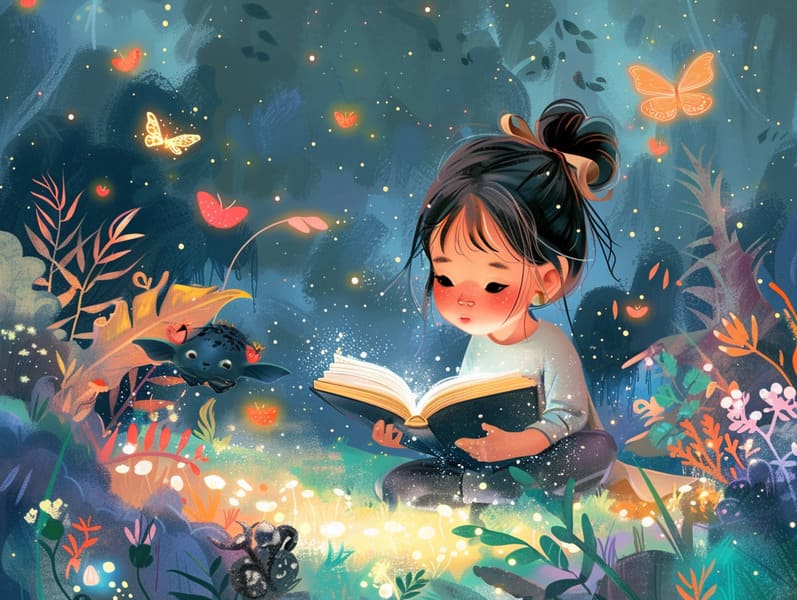The Genesis of Fairy Tales with Its Enduring Charm.
The Genesis of Fairy Tales with Its Enduring Charm.
Blog Article

Short fairy tales have timeless appeal. These narratives have been narrated from one generation to the next long before they were ever published. They emerged from a variety of backgrounds, including Indigenous traditions. They were initially conveyed among adults, often carrying themes and messages related to the societal norms and beliefs of the time.
The famous Grimm duo, the two Grimm brothers, were among the first to collect many of these beloved narratives. Their published works, "Grimm's Fables," included tales like "Ashenputtel," "Hansel and Grethel," and "Schneewittchen," which have since become pillars in the world of traditional fairy tales. Similarly, H. C. Andersen's fantastical fairy tales, such as "The Mermaid," and "The Duckling's Story," have touched hearts worldwide, guaranteeing their place in the pantheon of iconic fairy tales.
Though they are old, these stories remain as impactful as ever, especially as kids' bedtime tales. These whimsical stories are now available in different formats, including richly illustrated books, captivating animations, and internet fairy tales.
Their persistent charm can be linked to several magical reasons:
Valuable Lessons: Old fairy tales often impart important moral lessons. Fairy tales like "The Story of the Boy Who Cried Wolf" teach the benefit of truthfulness, while "The Tale of the Tortoise and the Hare" underline the qualities of determination and humbleness. These stories offer the young clear distinctions between correct and incorrect, molding their moral compass in a subtle yet significant way.
Empathy and Awareness: Classic fairy tales frequently portray protagonists facing problems and hurdles, urging audiences to relate with their struggles and cheer for their triumphs. For instance, "The Story of Beauty and the Beast" reveals the value of looking past the exterior to acknowledge the real person of a being, cultivating understanding and understanding.
Cultural Understanding: Many ancient fairy tales are rich in the cultural contexts from which they bloomed. Reading these stories can provide captivating looks into different societies, cultivating a sense of world appreciation and acknowledgment.
Creativity and Fantasy: The fantastical elements in old fairy tales—magical kingdoms—stimulate children’s imaginations. These tales lead readers to supernatural realms, invigorating innovative thinking and a sense of enchantment that continues a lifetime.
Old fairy tales are not only delightful but also enlightening. They serve as captivating tools in enhancing various mental and emotional abilities in the young. When old fairy tales are spoken out loud, they enhance language development by teaching new word meanings and complex sentence structures. This practice also cultivates hearing abilities and attention, as young ones remain attentive, keen to see what happens next.
Furthermore, examining the themes and characters of ancient fairy tales can sharpen thinking skills and intellectual skills. Children are shown to identify patterns, anticipate outcomes, and catch on to cause and effect. These talks also support kids voice their thoughts and feelings, strengthening their emotional intelligence.
In today’s high-tech era, the abundance of online storybooks has made these fairy tales more accessible than ever. Internet resources and web apps feature ample collections of classic fairy tales that can be experienced or listened through anytime, anywhere. Fairy tales narrated are particularly well-liked, featuring an engaging way for little ones to enjoy these captivating stories. Sound books and read-out-loud videos guide characters and settings to life, often supported by bewitching music and melodies that amplify the storytelling experience.
The timeless allure of ancient fairy tales lies in their ability to evolve to present eras while retaining their core values. Contemporary reimaginings of these narratives often introduce more varied protagonists and modern settings, making them relevant to today’s audience. However, the underlying themes of braveness, kindness, and equity remain unchanged, continuing to influence young readers of all ages.
Ancient fairy tales also offer a sense of contentment and closeness. They bring a ordered narrative with a straightforward beginning, middle, and end, often closing with the settlement of conflicts and the triumph of good over evil. This regularity can be encouraging for children, gifting a sense of steadfastness in an unpredictable world.
Ancient fairy tales continue to charm and enlighten new generations, maintaining their elegance and pertinence in modern society. As children's night stories, they feature a perfect blend of charm and understanding, enriching moral values, empathy, and creativity. The proliferation of web-based fairy tales and the read more likability of fairy tales spoken promise that these timeless fairy tales remain available to new generations.
By preserving and disseminating these tales, we continue to recognize the rich tapestry of legends and cultural heritage. Whether you are perusing a vividly illustrated book, delving into a internet library, or listening via an audio story, the enchantment of old fairy tales is always within reach. These stories highlight of the endless influence of stories and its ability to bind us across epochs and places.
Even if you are reading a vividly illustrated book, exploring a virtual library, or playing an read-aloud story, the splendor of Grimm's fairy tales is always within reach.
These narratives teach us of the ageless spell of narratives and its ability to connect us across eras and regions, casting a charm that captivates and teaches alike.